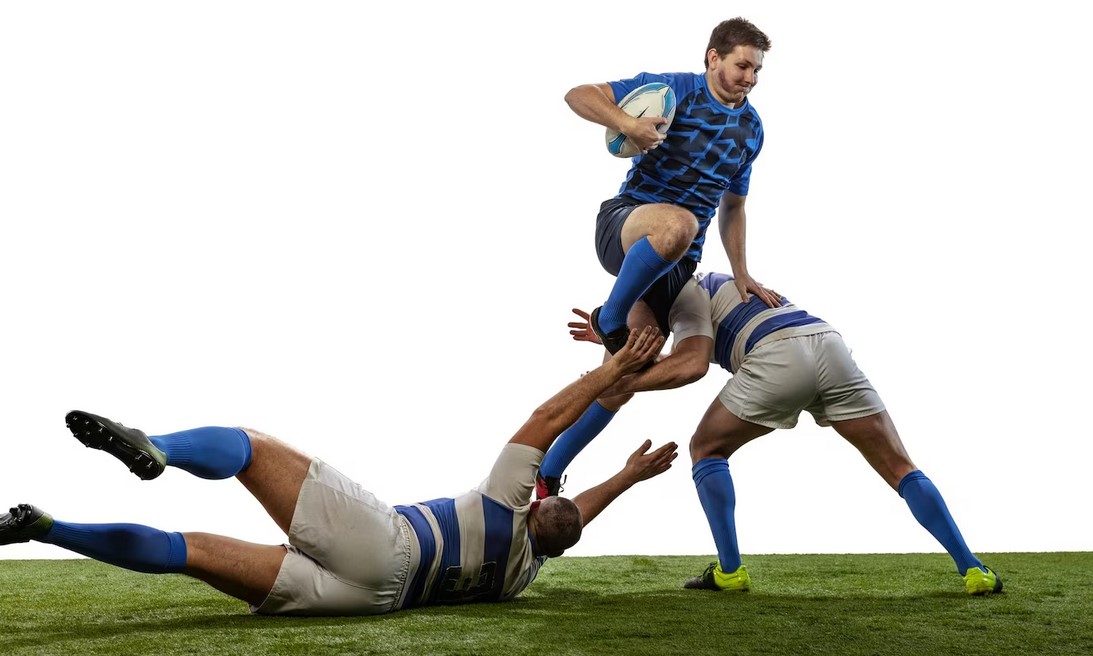Rugby, renowned for its exhilarating pace and robust physical challenges, is a sport that demands both skill and resilience. While the game’s intensity is a significant draw for players and fans alike, it also brings a heightened risk of injuries. The good news is that many of these injuries can be prevented. Through a combination of proper training, equipment, and awareness, players can navigate the rugby field with reduced risk. This article offers a comprehensive guide to ensuring safety in rugby, allowing players to focus on the game’s strategy and thrill.

Proper Training and Conditioning
The foundation of any sport, especially one as demanding as rugby, lies in adequate training and conditioning.
- Strength and Endurance. A rugby player’s strength isn’t just about muscle mass. It’s about functional strength—power that aids in tackles, scrums, and sprints. Regular strength training exercises, focusing on the core, legs, and arms, can provide the necessary support during gameplay. Cardiovascular workouts, such as running or cycling, are vital to build endurance, ensuring players can maintain their energy levels throughout the match.
- Flexibility. A flexible player is often a player less prone to injuries. Stretching routines, both dynamic and static, should be an integral part of a player’s training regimen. This not only improves muscle elasticity but also enhances overall agility, crucial for dodging tackles and making swift plays.
- Technique. Mastery of technique is a game-changer. Whether it’s the correct posture during a tackle or the right way to fall, proper technique can be the difference between a safe play and a severe injury. Regular drills, under the guidance of experienced coaches, can instill these techniques in players.
Proper training and conditioning are the cornerstones of injury prevention. A well-prepared player is not only an asset to the team but also less likely to face injuries.
Wearing the Right Gear
In rugby, your gear is your armor. It’s essential to ensure that this armor is both comfortable and protective.
- Headgear. While rugby headgear, often made of padded foam, doesn’t offer complete concussion protection, it significantly reduces the risk of superficial head injuries like cuts and abrasions.
- Mouthguards. A must-have for any rugby player. A good quality mouthguard protects against dental injuries and can even reduce the impact on the jaw.
- Padded Clothing. Modern rugby gear includes padded shirts and shorts. These provide an added layer of protection against bruises and impact injuries.
- Proper Footwear. The importance of the right footwear cannot be overstated. Rugby boots should offer excellent grip, especially in wet conditions, to prevent slips. Moreover, they should provide adequate ankle support.
The right gear acts as a shield, protecting players from potential injuries. Investing in quality equipment is paramount for anyone serious about the game.
Understanding the Rules and Playing Fair
Rugby’s rules are intricately designed, keeping player safety in mind.
- Tackling. The game has strict regulations against high tackles, which are a common cause of head and neck injuries. Players are trained to aim for the midsection, ensuring both the tackler and the tackled player remain safe.
- Scrum Safety. The scrum, a fundamental aspect of rugby, can be dangerous if not executed correctly. Proper binding, alignment, and engagement techniques are crucial to prevent scrum collapses.
- Fair Play. Rugby is as much about respect as it is about skill. Respecting opponents, referees, and the game’s spirit ensures a safe environment for all participants.
A thorough understanding of the rules, combined with a commitment to fair play, significantly reduces the risk of injuries.
Regular Health Check-ups and Injury Management
Despite all precautions, injuries can and do occur. Their management post-injury is as crucial as prevention.
- Immediate Attention. Any injury, however minor it might seem, warrants immediate medical attention. Early diagnosis often leads to quicker recovery.
- Rest and Recovery. The body’s healing mechanism requires time. It’s essential to allow adequate rest post-injury, resisting the urge to return to the field prematurely.
- Rehabilitation. Post-injury rehabilitation, under the guidance of physiotherapists, can help restore strength, flexibility, and confidence. Tailored exercises ensure that players recover fully and are less likely to suffer from recurrent injuries.
Injury management is a holistic process, encompassing immediate care, rest, and rehabilitation. Proper management ensures that players can return to the game in peak condition.
Rugby, with its rich history and global following, is a sport that captivates millions. While the risks associated with the game are real, they are not insurmountable. With the right approach, training, equipment, and mindset, players can enjoy the game’s myriad joys without compromising their safety. After all, a safe player is a happy player, and a happy player is always a game’s biggest asset.

Leave a Reply